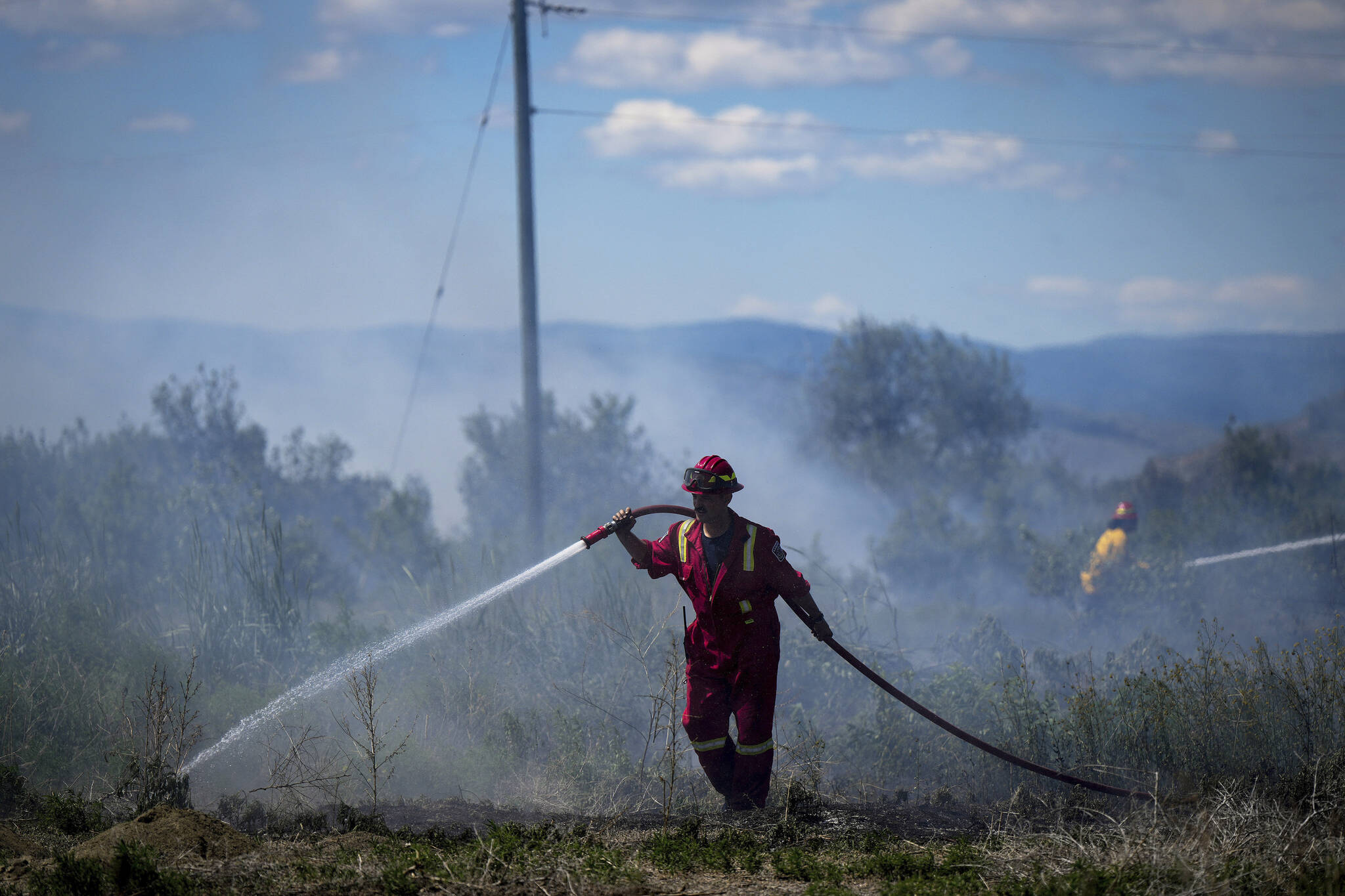Showers on Saturday could sprinkle an aggressive wildfire that has forced more than two-thousand people from their homes in northeastern British Columbia, but forecasters say thunderstorms could sweep the parched region before any rain arrives.
Environment Canada says the thunderstorms in the Tumber Ridge and Dawson Creek areas are coupled with heavy smoke and temperatures almost 10 degrees above normal.
That could complicate efforts to fight the raging West Kiskatinaw River wildfire, which has burned 96 square kilometres of bush and timber east of Tumbler Ridge in the three days since it was discovered.
The extreme fire activity prompted the District of Tumbler Ridge to skip an evacuation alert Thursday and jump right to an order requiring all 2,400 residents to get out immediately and seek refuge in Dawson Creek or Fort St. John.
The B.C. Wildfire Service says the blaze is among 83 active wildfires in the province, including the now nearly two-square-kilometre fire that has closed the Vancouver Island highway connecting Port Alberni, Tofino and Ucluelet to the rest of the Island.
A four-hour, back road detour allowing limited movement in and out of the area will also be closed for much of the day as a vehicle is pulled from a lake along the rough route, but the wildfire east of Port Alberni is still listed as out-of-control, so it’s expected the detour will reopen as soon as possible.
“The Province urges preparation and patience as long wait times are expected once the detour reopens,” the Ministry of Transport said in a statement advising of the closure, which was planned to occur between 1 p.m. and 9 p.m. Friday.
“All travellers are urged to avoid travel along the detour route before, during and after the closure because commercial trucks will be queuing for passage,” the statement said.
Officials told a news conference on Thursday that more than 5,000 square kilometres has burned since the start of the wildfire season on April 1, a total that Neal McLoughlin, superintendent of predictive services for the BC Wildfire Service, called “quite alarming.”
Fire bans, including campfire bans, now cover most of the province, although campfires are still allowed in the northwest and southeast corners of B.C. and on Haida Gwaii.
It’s the earliest, ever, that B.C. has restricted campfires, and the bans come as the unusually warm summer conditions set 20 daily high temperature records on Thursday, including a mark of 38.5 C in Lytton, making the Fraser Canyon community the hottest in Canada for consecutive days.
Environment Canada said rain was expected Friday and Saturday over much of southern B.C., with between five and 10 millimetres due over much of the south coast by Saturday, while Interior forecasts called for around the same amount between Cranbrook and the Prince George area.
The weather office shows warm dry conditions should to return next week, although forecasters were calling for a chance of showers in the area near the West Kiskatinaw River wildfire, beginning on Tuesday.
The Canadian Press

